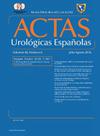La influencia de la invasión linfovascular en la recurrencia y progresión del cáncer vesical no músculo invasivo tratado con bacilo de Calmette-Guérin
IF 1.2
4区 医学
Q3 UROLOGY & NEPHROLOGY
引用次数: 0
Abstract
Introduction and objectives
To investigate whether lymphovascular invasion (LVI) could be a factor in predicting recurrence and progression in patients with high and very high-risk non-muscle-invasive bladder cancer (NMIBC) who received Bacillus Calmette-Guérin (BCG) treatment.
Methods
Ninety-three patients with high and very high-risk NMIBC, diagnosed initially in our clinic, were treated with at least 1 year of BCG therapy, and they were followed up to assess recurrence and progression, comparing those with and without LVI at the time of diagnosis.
Results
In the entire cohort, LVI was present in 33 (35.5%) patients while absent in 60 (64.5%) patients. Among patients with LVI, 17 (51.5%) showed recurrence, and 11 (33.3%) showed progression. Statistically significant differences were observed in both recurrence and progression in patients with LVI compared to those without LVI (P < .001 and .04, respectively). Additionally, univariate and multivariate regression analysis revealed that the presence of LVI was an independent factor predicting recurrence (P = .001).
Conclusion
In our study, we demonstrated the importance of being cautious regarding recurrence and progression in patients with high and very high-risk NMIBC who also have LVI despite receiving standard treatment. We found that approximately one-third of these patients may experience recurrence within one year.
淋巴管侵袭对用Calmette- Guerin杆菌治疗的侵袭性非肌肉膀胱癌复发和进展的影响
前言和目的探讨淋巴血管侵袭(LVI)是否可能是预测高、高危非肌肉浸润性膀胱癌(NMIBC)患者接受卡介苗治疗后复发和进展的一个因素。方法93例首次确诊的高、高危NMIBC患者,接受至少1年BCG治疗,随访评估复发和进展情况,比较诊断时有无LVI的患者。结果在整个队列中,33例(35.5%)患者存在LVI, 60例(64.5%)患者不存在LVI。LVI患者中,17例(51.5%)出现复发,11例(33.3%)出现进展。与无LVI患者相比,LVI患者的复发和进展均有统计学差异(P <;分别为0.001和0.04)。此外,单因素和多因素回归分析显示LVI的存在是预测复发的独立因素(P = .001)。结论:在我们的研究中,我们证明了尽管接受了标准治疗,但对患有LVI的高风险和高危NMIBC患者的复发和进展保持谨慎的重要性。我们发现大约三分之一的患者可能在一年内复发。
本文章由计算机程序翻译,如有差异,请以英文原文为准。
求助全文
约1分钟内获得全文
求助全文
来源期刊

Actas urologicas espanolas
UROLOGY & NEPHROLOGY-
CiteScore
1.90
自引率
0.00%
发文量
98
审稿时长
46 days
期刊介绍:
Actas Urológicas Españolas is an international journal dedicated to urological diseases and renal transplant. It has been the official publication of the Spanish Urology Association since 1974 and of the American Urology Confederation since 2008. Its articles cover all aspects related to urology.
Actas Urológicas Españolas, governed by the peer review system (double blinded), is published online in Spanish and English. Consequently, manuscripts may be sent in Spanish or English and bidirectional free cost translation will be provided.
 求助内容:
求助内容: 应助结果提醒方式:
应助结果提醒方式:


